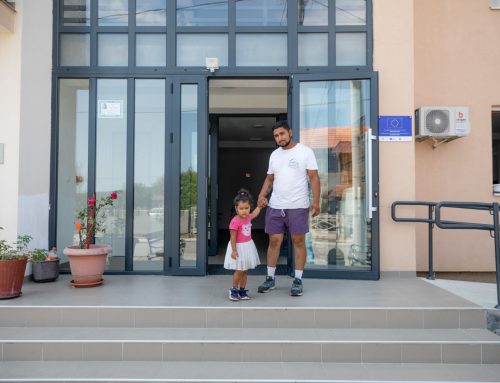The conference “Circular Economy – How to Get to It”, organised by the Policy and Legal Advice Centre (PLAC III) project, brought together representatives of the Ministry of the Environmental Protection, civil society organizations and the business community to discuss steps needed for transition to green economy in Serbia.
The conference organised in the cooperation with the Ministry of Environmental Protection was held in Belgrade on 6 November 2019. An ex ante analysis of the circular economy effects, which was realised within the scope of PLAC III project activities, was presented at the conference. The analysis should serve as a basis for the development of a public policy document that will enable the full development of the circular economy in Serbia.
The team leader of the PLAC III project, Mr Andrej Engelman presented the project activities, which cover 11 negotiation chapters. He said that the European Union wants to assist Serbia in the process of harmonisation of national legislation with the EU acquis; the aim is to introduce European standards and improve citizens’ lives.
In his opening address, Assistant Minister for the Environmental Protection, Mr Aleksandar Vesić said that Serbia is now working on creating the necessary framework for the green economy, and that it is necessary to identify the problems that should be addressed, because “the circular economy has become an integral part of life in all developed societies”.
The head of the Group for the Circular and Green Economy of the Ministry of the Environmental Protection, Mrs Aleksandra Vučinić said that the concept of a circular economy leads to resource savings, raw material and energy efficiency and environmental protection. Its key elements are recycling, green public procurement, the promotion of small and medium-size enterprises, while, according to Vučinić, innovations are of key importance since they are needed to facilitate the recycling process.
Representative of the Standing Conference of Municipalities of the Municipalities, Mr Miodrag Gluščević said that the SCTM was working on exploring the capacity of local governments to introduce circular economy and on attitudes towards it at the local level. He said the research was ongoing, but already showed that there was a good level of awareness.
Project experts Dušan Vasiljević and Dragana Petrović presented an ex ante analysis that showed the preconditions for the introduction of the circular economy currently in Serbia. The advantages identified are that part of the legislation is already in line with the EU acquis, that a process has been started that will enable green public procurement to become a standard and innovations are recognised as a driving force in introducing the green economy principles. One of advantages is the well-developed IT sector, with exports of services worth almost EUR one billion in 2018.
Weaknesses have been identified as poor waste management (out of the 12 million tons of waste generated annually, only three percent of municipal waste is recycled), legislation is insufficiently developed and inspection system is ineffective. In addition, Serbia faces inefficient energy consumption: as Vasiljević stated, for each 1 EUR of Gross Domestic Product, 260 grams of waste is generated, 4,6 kilowatt-hours of electricity consumed and 0,7 kilograms of carbon dioxide (CO2) generated.
Uncontrolled imports of inert and hazardous waste, large imports of old vehicles, poor penalties and inefficient incentive policies are also identified as aggravating circumstances.
However, it was pointed out that the Serbian economy has the potential to develop a circular economy, especially if the situation improves in the area of recycling and energy.




